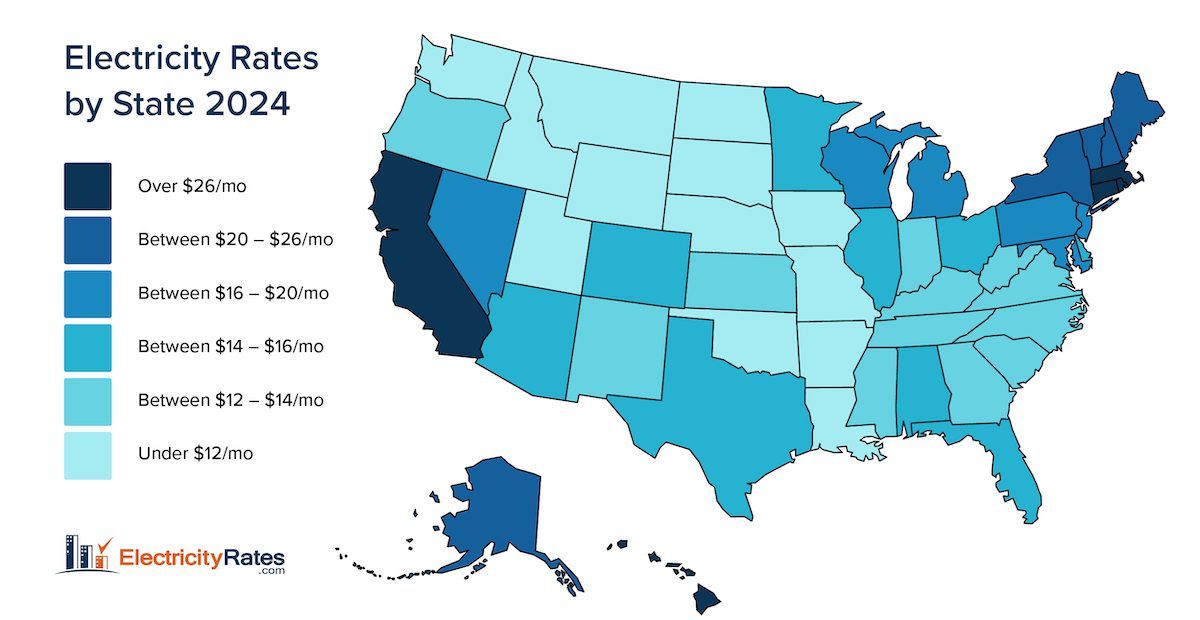The browser you are using is not supported. Please consider using a modern browser.

Why is Electricity in Connecticut So Expensive?
Table of Contents

If you have ever opened your utility bill to shock and disbelief leaving you pondering – “Why is electricity in Connecticut so expensive?” then this page is for you.
Connecticut’s electricity rates are some of the highest in the United States. In fact, when it comes to the average highest monthly electricity bill, Connecticut ranks number two in the country, behind only Alaska. Connecticut is the fifth most expensive state in the Union for the average per kWh electricity rate.
States with the most expensive electricity rates including the state’s average consumption and monthly bill.

[zipcta mode=”light” heading=”How Much Can You Save Connecticut?” subheading=”Shop electricity rates from leading providers and make the switch today.”]
Top 10 States with the Highest Electricity Rates
[datatable sheet=https://docs.google.com/spreadsheets/d/e/2PACX-1vTPm8vLIy_oNsAufnx-WPC-5K1ow_1C9bL3yfuvBIQuxsHRJlsDcCRLqUj_AWmZRigtUTJLZRdXYa-U/pub?gid=0&single=true&output=csv]
Average Electricity Rates based on 2022 Average Price of Electricity by State
Source: 2022 Average Monthly Bill – Residential
Below, we delve into the reasons behind these high costs and explore potential solutions for residents and businesses looking to manage their energy expenses more effectively.
The Role of Natural Gas and Geographical Challenges
One of the primary reasons for Connecticut’s high electricity rates is its heavy reliance on natural gas for power generation.
Despite the abundance of natural gas nationally, Connecticut lacks in-state natural gas resources. This reliance necessitates using regional pipelines for supply, which can lead to bottlenecks and price spikes, especially during the winter months.
The state’s geographical position further compounds these challenges, as fuel transportation costs are higher due to the distance it needs to be transported.
[best-rates utility-code=CLP]
High Living Costs and Infrastructure Expenses
Connecticut’s high cost of living, including salaries, taxes, land, and other expenses, significantly contributes to the high electricity rates.
Residents pay around 15% more in wire and other infrastructure costs, which are included in the delivery portion of utility bills, compared to neighboring states.
This delivery portion comprises several charges, such as transmission and distribution charges, federally mandated congestion charges, and electric system improvement charges, all of which add up to increase the overall cost of electricity for Connecticut residents.
State Energy Policies and Federal Mandates
State policy decisions and aggressive renewable energy goals have also contributed to higher electricity costs.
Efforts to transition to 100 percent renewable energy by 2040 and the slow development of energy infrastructure like gas pipelines and transmission lines have driven up costs.
While such policies may contribute to more affordable energy in Connecticut in the long term, they aren’t alleviating current electricity prices in the short term.
Furthermore, charges such as the federally mandated congestion charge, which covers the cost of running more expensive local power plants during peak demand, and charges for electric system improvements, like smart meters, also contribute to higher bills.
However, Connecticut’s deregulated energy market allows consumers to shop around for cheaper supply rates, potentially offsetting some delivery charges.
Seeking Solutions and Alternatives
Addressing the high electricity rates in Connecticut requires a multifaceted approach.
Experts suggest a faster adoption of renewable and carbon emissions-free power sources, long-term contracts for liquefied natural gas (LNG) to stabilize its price, and a more diverse mix of power generator fuel sources.
These solutions aim to reduce dependency on the high-priced spot market and enhance the efficiency and sustainability of the state’s energy supply.
Consumer Strategies for Managing High Rates
For consumers, shopping for an alternative supplier can offer relief from high standard service offer rates.
Thanks to their ability to hedge, suppliers can purchase longer-term electricity contracts at better prices, providing consumers with lower fixed-rate plans.
This strategy can be particularly effective for managing costs in the face of fluctuating utility rates.
Connecticut residents can also apply for the Connecticut Energy Assistance Program (CEAP). The CEAP assists residents with their home heating costs. Depending on factors like household income, size, and if there’s a vulnerable household member, basic aid for heating bills can vary from $180 to $530.
Powering Through: Navigating Connecticut’s High Electricity Costs
In conclusion, Connecticut’s high electricity rates are influenced by a combination of the state’s reliance on natural gas, geographical disadvantages, public policies, and the high cost of living.
While these factors present significant challenges, solutions involving adopting renewable energy sources, strategic procurement of natural gas, and consumer engagement with alternative suppliers offer pathways to managing and potentially reducing energy costs down the road.
For Connecticut residents seeking to navigate the complex landscape of electricity rates and find the best energy deal, ElectricityRates.com stands out as a valuable resource.
Seeking to understand who the major providers are serving CT? Check our picks for Best Electricity Providers in Connecticut. Additionally, our marketplace offers a comprehensive comparison tool that simplifies the process of shopping for electricity providers. By inputting your ZIP code, you can quickly access a list of available plans and suppliers in your area and compare rates, terms, and other critical factors.
We hope this information empowers consumers to make informed decisions and potentially save on their electricity bills, providing a beacon of hope in Connecticut’s challenging energy market.
